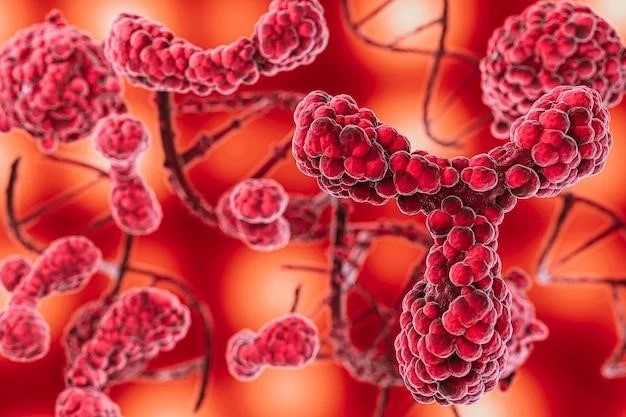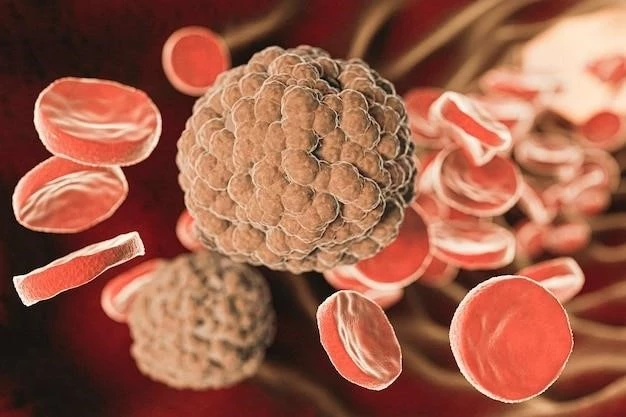Symptoms of Acute Myeloblastic Leukemia Type 4
Fatigue and Weakness — Rest and prioritize tasks to manage energy levels effectively.
Frequent Infections — Practice good hygiene and avoid close contact with sick individuals.
Unexplained Weight Loss ー Monitor food intake and consult a healthcare provider.
Easy Bruising and Bleeding — Be cautious to prevent injuries, especially to the skin.
Fatigue and Weakness
Managing fatigue and weakness is crucial. Ensure a balanced diet, stay hydrated, get regular, gentle exercise, and prioritize sleep. Consult your healthcare provider for personalized advice and support to cope with these symptoms effectively.
Frequent Infections
To reduce the risk of infections, practice good hygiene habits like regular handwashing. Avoid crowds, sick individuals, and raw foods. Stay up-to-date with vaccinations and inform your healthcare provider about any signs of infection promptly for timely intervention.
Unexplained Weight Loss
Unexplained weight loss can be concerning. Keep a food diary to monitor intake and seek a balanced diet rich in nutrients. Consult a healthcare provider for evaluation and guidance on maintaining a healthy weight. Prioritize nourishing foods and regular meals.
Easy Bruising and Bleeding
To manage easy bruising and bleeding, handle sharp objects carefully and avoid activities with a high risk of injury. Apply pressure to cuts and bruises and seek immediate medical attention for prolonged bleeding. Inform your healthcare provider about any unusual bleeding episodes for proper evaluation.
Treatment Options for Acute Myeloblastic Leukemia Type 4
Chemotherapy — Discuss the potential side effects and benefits with your oncologist.
Stem Cell Transplant — Understand the process and follow post-transplant care guidelines.
Targeted Therapy ー Learn about targeted drug options and their impact on leukemia cells.
Clinical Trials — Inquire about research studies and their eligibility criteria for novel treatments.
Chemotherapy
Chemotherapy may have various side effects. Stay well-hydrated, eat nutritiously, and follow all treatment instructions carefully. Communicate openly with your healthcare team about any discomfort or concerns. Consider seeking support from counselors or support groups during your treatment journey.
Stem Cell Transplant
Prepare for a stem cell transplant by discussing the procedure thoroughly with your medical team. Follow the pre-transplant regimen diligently and post-transplant care instructions meticulously to support your recovery. Maintain open communication with your healthcare providers and share any concerns promptly.
Targeted Therapy
Targeted therapy offers specialized treatment. Learn about the specific drugs used and their potential effects. Follow the treatment schedule diligently and report any adverse reactions promptly to your healthcare team. Stay informed about your therapy’s progress and engage in open discussions with your medical providers.
Clinical Trials
Participating in clinical trials can offer access to cutting-edge treatments. Discuss trial options with your healthcare team and consider the potential benefits and risks. Stay informed throughout the process, ask questions, and keep detailed records of your participation for your health records. Your contribution can further research and potentially benefit future patients.
Causes of Acute Myeloblastic Leukemia Type 4
Genetic Mutations — Understand the role of genetic changes and discuss family history.
Exposure to Radiation or Chemicals ー Minimize exposure in occupational or environmental settings.
Previous Chemotherapy or Radiation Therapy ー Maintain follow-up care and monitoring after treatments.
Genetic Mutations
Genetic mutations play a crucial role. Discuss genetic testing with your healthcare provider to understand your risk factors. Stay informed about your family medical history and consider genetic counseling for guidance on managing and monitoring potential genetic predispositions related to Acute Myeloblastic Leukemia Type 4.
Exposure to Radiation or Chemicals
Reduce risks by minimizing exposure to radiation and chemicals whenever possible. Follow safety protocols at work and use protective gear. Stay informed about potential hazards in your environment and advocate for protective measures. Regular health check-ups can help monitor any effects of past exposures on your health.
Previous Chemotherapy or Radiation Therapy
After past treatments, prioritize follow-up care and regular monitoring. Communicate any new symptoms to your healthcare team promptly. Discuss potential long-term effects of past therapies and monitor your health vigilantly. Engage in a healthy lifestyle to support your recovery and overall well-being.
Prognosis for Acute Myeloblastic Leukemia Type 4
Survival Rates — Understand prognosis statistics and discuss individualized treatment plans.
Treatment Success Rates — Monitor response to treatment and communicate any changes to your healthcare team.
Possible Complications ー Be aware of potential complications and seek prompt medical attention.
Survival Rates
Survival rates can vary. Stay positive and adhere to your treatment plan. Lean on support from loved ones and mental health professionals. Focus on self-care and maintain open communication with your healthcare team to navigate the healing journey with resilience and hope.
Treatment Success Rates
Understand treatment success rates can guide expectations. Stay committed to your treatment plan and adopt healthy lifestyle habits to aid recovery. Monitor your progress closely, report any concerns promptly, and engage with your medical team. Remember, each individual’s response to treatment is unique, focus on self-care and positivity throughout your journey.
Possible Complications
Anticipate potential complications during your treatment journey. Stay vigilant for symptoms and promptly communicate any changes to your healthcare team. Adhere to follow-up appointments and recommended screenings to monitor your health. By staying proactive and informed, you can address complications effectively and optimize your overall well-being

Risk Factors for Acute Myeloblastic Leukemia Type 4
Age, Understand how age can impact the disease and tailor your healthcare plan accordingly.
Gender ー Be aware of gender-related risk factors and discuss preventive strategies with your healthcare provider.
Family History ー Knowledge of your family medical background is crucial for early detection and monitoring.
Age
Age is a significant risk factor for Acute Myeloblastic Leukemia Type 4. Regular health check-ups become crucial as you age. Prioritize screenings and maintain a healthy lifestyle to reduce associated risks. Discuss age-related concerns with your healthcare provider for tailored guidance on disease management and prevention strategies.
Gender
Gender can influence the risk of Acute Myeloblastic Leukemia Type 4. Stay informed about gender-specific factors and how they may impact your health. Discuss gender-related concerns with your healthcare provider to develop a proactive health management plan. Engage in regular screenings and adopt a healthy lifestyle to mitigate gender-related risks effectively.
Family History
Understanding your family’s medical history is vital. Be proactive in discussing potential genetic predispositions with your healthcare provider. Regular screenings and early detection can be key. Stay aware of family history to empower your approach to managing and monitoring Acute Myeloblastic Leukemia Type 4 risks effectively.
Diagnosis of Acute Myeloblastic Leukemia Type 4
Blood Tests ー Regular blood tests are essential for early detection and monitoring.
Bone Marrow Biopsy ー A biopsy helps confirm diagnosis and determine treatment options.
Imaging Tests ー Imaging aids in evaluating the extent of the disease and response to treatment.
Blood Tests
Regular blood tests are crucial for diagnosing Acute Myeloblastic Leukemia Type 4. Stay proactive in scheduling and attending these tests as they help in monitoring important blood cell counts and identifying any abnormalities. Promptly discuss the results with your healthcare provider to start appropriate treatment early for better outcomes.
Bone Marrow Biopsy
A bone marrow biopsy is vital for confirming Acute Myeloblastic Leukemia Type 4. It provides detailed information on the bone marrow cells and helps determine the disease stage. Follow your healthcare provider’s recommendations, ask about the procedure, and discuss any concerns beforehand. Understanding the results can guide your treatment plan effectively;
Imaging Tests
Imaging tests play a crucial role in evaluating Acute Myeloblastic Leukemia Type 4. They help assess the extent of the disease and monitor response to treatment. Discuss the purpose and potential outcomes of imaging tests with your healthcare team. Stay informed about the results to make informed decisions about your treatment journey.
Lifestyle Changes for Acute Myeloblastic Leukemia Type 4
Healthy Diet ー Prioritize nutritious foods to support your overall health and well-being.
Regular Exercise ー Incorporate physical activity for strength and endurance during treatment.
Stress Management ー Utilize relaxation techniques to reduce stress and maintain emotional balance.
Healthy Diet
A nutritious diet is essential for managing Acute Myeloblastic Leukemia Type 4. Include a variety of fruits, vegetables, whole grains, and lean proteins. Stay hydrated and limit processed foods and sugars. Consult a dietitian for personalized dietary recommendations to support your treatment journey and overall health.
Regular Exercise
Gradually incorporate physical activity to improve strength and reduce fatigue. Consult your healthcare team for tailored exercise recommendations. Choose activities you enjoy and can safely perform. Stay active within your limits to boost energy levels and overall well-being while undergoing treatment for Acute Myeloblastic Leukemia Type 4.
Stress Management
Practice stress-relief techniques like deep breathing, meditation, or yoga to cope with treatment stress. Engage in hobbies, connect with loved ones, and seek support from counselors or support groups. Prioritize self-care to maintain emotional well-being while managing Acute Myeloblastic Leukemia Type 4.
Research Advances in Acute Myeloblastic Leukemia Type 4
Immunotherapy — Explore the potential benefits and risks of immunotherapy in your treatment plan.
Precision Medicine — Learn how personalized treatments can target specific characteristics of cancer cells.
Novel Treatment Approaches — Stay informed about innovative therapies and consider discussing with your healthcare team.
Immunotherapy
Discuss the potential of immunotherapy to boost your immune system’s response against cancer cells. Be informed about side effects and ensure regular monitoring during this innovative treatment approach. Consult with your healthcare team to explore if immunotherapy is a suitable option for managing Acute Myeloblastic Leukemia Type 4.
Precision Medicine
Explore how precision medicine targets individual genetic characteristics of cancer cells. Understand the potential benefits and limitations of tailored treatment plans. Communicate closely with your medical team to determine whether precision medicine approaches are suitable for your specific Acute Myeloblastic Leukemia Type 4 condition.
Novel Treatment Approaches
Stay informed about cutting-edge treatments and their potential impact on Acute Myeloblastic Leukemia Type 4. Discuss innovative therapies with your healthcare provider to explore new possibilities for managing the disease. Seek out clinical trials and research programs to access novel approaches that may enhance your treatment outcomes.
